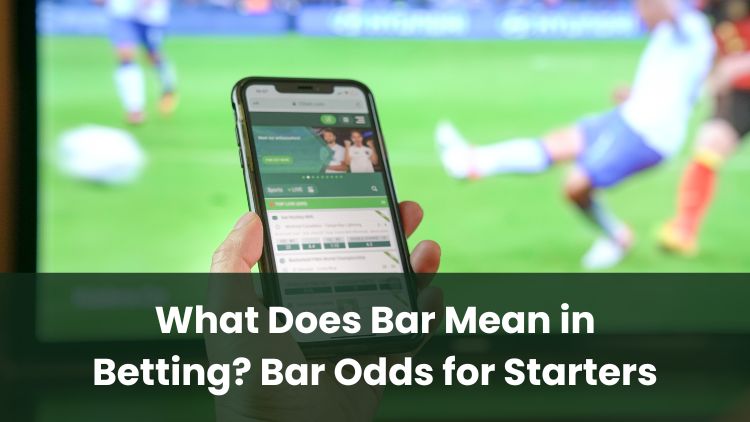
Bar odds are a familiar sight in betting, especially in horse racing, yet the term may feel a little unclear if you are new to the scene. It often appears in markets with plenty of runners, and understanding how it is used might help you follow those listings more easily.
This blog post outlines the idea, describes how the figures are chosen, and shows how they appear on a race card or sportsbook page.
By the end, you should have a steady grasp of the term and how it fits within a market.
Understanding the Bar Concept in Sports Betting
At this stage, think of the word “bar” as a marker used to gather together runners that sit beyond the main selections. It simply signals that everything after a certain point shares a broad bracket.
If a market shows “20/1 bar” after naming several horses, it means every runner not mentioned above that line is available at 20/1 or bigger. This keeps crowded pages more organised, especially if only a few contenders are expected to feature more prominently.
You will often see the bar shown on race cards, in betting shops, and online. It acts as a shorthand that avoids displaying every single price in deep fields.
How Are Bar Odds Calculated for Starters?
Here, the picture becomes clearer. Bookmakers compare form, recent performances, conditions, and wider market signals to decide which selections are shown individually. Those viewed as more prominent are listed one by one, while those sitting further back are grouped at the bar figure, such as “20/1 bar”.
Imagine a packed handicap. The traders might list six runners individually, then introduce “25/1 bar” for the remainder. The unlisted horses are not treated as identical; they are simply placed beyond the line to avoid an overwhelming list. Their precise prices might still differ, though all sit beyond that grouped figure.
Because markets move, the position of the bar might shift, too.
Why Do Bookmakers Use Bar Odds?
Earlier, we touched on how the bar helps keep things organised. Here is the fuller picture: bar odds streamline large markets so they do not become unwieldy.
By setting a bar, bookmakers place the most prominent names up front and gather the rest under a clearly stated minimum. It can save space, help readers scan quickly, and give an overview without pages of entries.
For anyone comparing prices, the bar marks the point separating named selections from the broader field. It also indicates that everything beyond that line is at least the quoted figure, which some bettors use as a general guide if they decide to take part.
With this purpose in mind, the bar becomes far easier to read in practice.
If you choose to take part, always pause and consider whether it suits your circumstances. Support is available from groups such as GamCare and BeGambleAware.
How to Read and Interpret Bar Odds in Horse Racing
Earlier, we outlined how a bar separates individually priced runners from those grouped together. Here is the more complete version: on a race card, look for the point where individually priced horses stop and a grouped entry appears, such as “16/1 bar”. Everything not named above that point will be 16/1 or longer.
Only the selections before the bar show exact figures. Those after the bar tend to be viewed as longer outsiders at that moment. Their individual prices might vary, but they all sit beyond the grouped threshold.
Bar refers specifically to the quoted win prices. Usual each-way terms, place rules, and any promotional conditions still apply across the field according to the event.
Examples of Bar Odds in Popular Races
In races such as the Grand National or Cheltenham Gold Cup, a few prominent runners are often listed individually, followed by something like “33/1 bar”. This tells you that every other name sits at 33/1 or bigger, giving a quick sense of how the wider field is viewed compared with the leaders.
This shorthand lets you focus on the most highlighted runners while still understanding the broader picture without scrolling through dozens of entries.
Understanding how bar odds appear in a market can help bring the information on a race card or sportsbook page into clearer focus. With the main selections shown individually and the remainder grouped beyond a stated point, the layout may become easier to follow and compare.
If you choose to place a bet, keep your limits modest and never stake more than you are prepared to lose. Independent support is available from GamCare and BeGambleAware.
**The information provided in this blog is intended for educational purposes and should not be construed as betting advice or a guarantee of success. Always gamble responsibly.
